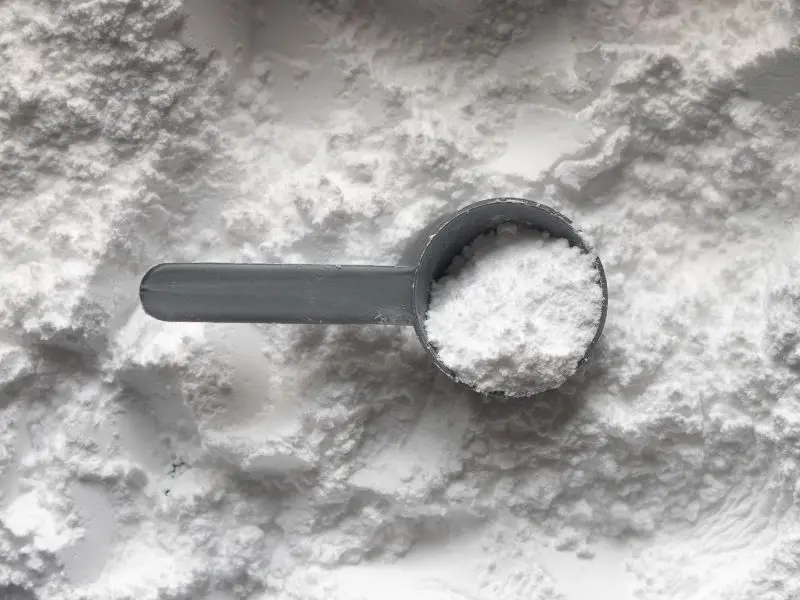Creatine is well-researched and one of the best supplements available today. It’s specifically useful in facilitating the production of ATP (adenosine triphosphate). ATP is the body’s main source of energy. Consistently taking creatine with pre-workout or other times during the day will get you great results.
Due to how great creatine performs, you want to make sure it’s as potent as possible. One of the common concerns can be how quickly creatine expires. Or you may wonder if it’s still ok to take expired creatine. If you’re wondering, “what happens if I take expired creatine?” Here’s a quick answer.
Taking expired creatine will have minimal, if any, side effects. Studies show that it maintains potency for a year after listed expiration dates. You will likely still get results from recently expired creatine. That said, creatine isn’t too expensive. If you’re worried, buy a new container of it.
With that out of the way, there are still other things you should consider with expired creatine. You need to know about storage, different types of creatine, and ways to identify if you shouldn’t use it. This article will give you the answers you need. Keep reading to get all the details.
Key Takeaways
- Taking expired creatine isn’t dangerous, and side effects are very rare.
- Creatine monohydrate maintains full potency for a long time.
- Different types of creatine can affect how shelf-stable it is.
- Store your creatine properly to ensure it is the most effective.
Safety Concerns with Expired Creatine
The main thing that concerns people with expired creatine is safety. You don’t want to take anything that will cause harm in the long run. Side effects from taking creatine within a year after expiring are rare. Minor side effects that could happen are:
- Upset stomach
- Nausea
- Muscle cramps
These side effects are unlikely to happen. The only instance is usually in cases of bacteria build-up in the creatine. Bacteria build-up can be a concern if creatine is exposed to a lot of moisture. Keeping your creatine sealed and in a cool, dry place will prevent this from happening.
Many companies offer bulk creatine. It’s a great deal to get it for a cheaper cost per serving. They’ll often offer it in up to three-year supplies. There wouldn’t be so many companies offering it if it wasn’t safe to take it that far out in the future.
Potency Over Time
Several studies have found that creatine maintains its potency far into the future. One study found that creatine doesn’t lose potency for 44 months after production. Interestingly, that study analyzed creatine potency when stored in high heat. So it wasn’t even conducted on creatine stored in optimal conditions.
If you store creatine at room temperature, keep it sealed, and away from moisture, you can likely expect it to be potent even longer.
How to Identify Expired Creatine
Identifying expired creatine isn’t always easy. Often, expired creatine will look exactly the same as when you bought it. If it looks the same, it’s a good sign it’s likely ok to take it without harm or side effects.
Some signs that creatine might be expired or have bacteria build-up where it would be unsafe to take are:
- Sour or strong odor
- Change in color
- Not mixing well with water
- Unusual taste
It’s unlikely you’ll see any of these signs ever. If you do, the creatine is either very old or wasn’t stored properly.
Is Clumpy Creatine Bad?
Unlike the other signs listed above, clumpy creatine usually isn’t a bad sign. Creatine can naturally clump up on its own. Clumps are due to the chemical properties of creatine. So if your creatine has clumped up, sift it around and break up the clumps. It should be fine to take.
Different Types of Creatine
Different types of creatine can affect its shelf-life. The above studies we mentioned were all done on creatine monohydrate. The monohydrate form of creatine has the most shelf stability, especially in powdered form.
Other forms of creatine are:
- Creatine HCL (hydrochloride)
- Creatine ethyl ester
- Liquid creatine
We’ll avoid boring you with too many details about each one. Simply put, creatine HCL and ethyl ester were created to absorb faster. Although, absorption rates of creatine don’t matter as much. Creatine becomes more effective as it builds up stores in the body over time.
Creatine HCL and monohydrate usually perform about the same. Research shows ethyl ester performs worse than monohydrate.
On the other hand, the purpose of liquid creatine is more convenient consumption. It will likely have the same effect as creatine powder. But creatine drinks tend to come with added ingredients, which aren’t always the best.
The one place where these forms of creatine are most different is their shelf life. Aside from monohydrate powder, all other forms of creatine have less shelf stability. Creatine liquids have the worst shelf-life of the group. The table below shows the average expiration dates and the total shelf-life of each one.
| Type of Creatine | Average Factory Expiration Date (Listed on containers) | Actual Shelf Life (Total time of full potency) |
| Creatine Monohydrate | 3 years | 44+ months |
| Creatine HCL | 2-3 years | 3+ years |
| Creatine Ethyl Ester | 1-2 years | 2-2.5 years |
| Creatine Powder | 2-3 years | 44+ months |
| Creatine Liquid | 1 year | 1 year |
As you can see, creatine monohydrate powder is the way to go for the best shelf-life and longest potency.
Proper Storage and Care of Creatine
As we’ve mentioned, storing creatine in a cool, dry place, away from moisture, helps it last longer. Here are some additional tips for storing your creatine for max potency:
- Always seal the container tightly after use.
- Keep it in a place away from direct sunlight – household cabinets or snack drawers are great places.
- Putting it in the fridge could lead to a longer shelf-life.
- If the container it comes in doesn’t seal well, put it in a freezer bag, Tupperware, or Pyrex container.
Generally, you don’t have to go to many extremes with creatine storage. Putting it in a cabinet at room temperature should work just fine in most instances.
Conclusion
There you have it. That should do it for everything you’ll ever need to know about expired creatine.
Remember, taking expired creatine within a year after the listed expiration date is ok. It should have the same effectiveness.
If it has a bad smell, changes color, or tastes funny, those are concerning signs.
The type of creatine does matter. Creatine monohydrate has the best shelf-life. It’s also usually the cheapest form of creatine, so you can’t go wrong with monohydrate powder.
Storing your creatine right will help you get the most potency from it.
As long as you consider all those aspects, you’ll be good to go.
FAQ
Resources
- https://www.ncbi.nlm.nih.gov/pmc/articles/PMC3080578/
- https://pubmed.ncbi.nlm.nih.gov/19228401/
- https://www.ncbi.nlm.nih.gov/pmc/articles/PMC3080578/
- Best Pull Up Bar Diameter For You: A Comprehensive Guide - September 4, 2023
- Grip Talk: What is Barbell Knurling & Why It Matters? - September 4, 2023
- Say Goodbye to Shoulder Pain: How to Avoid Pain from Dips - September 4, 2023

